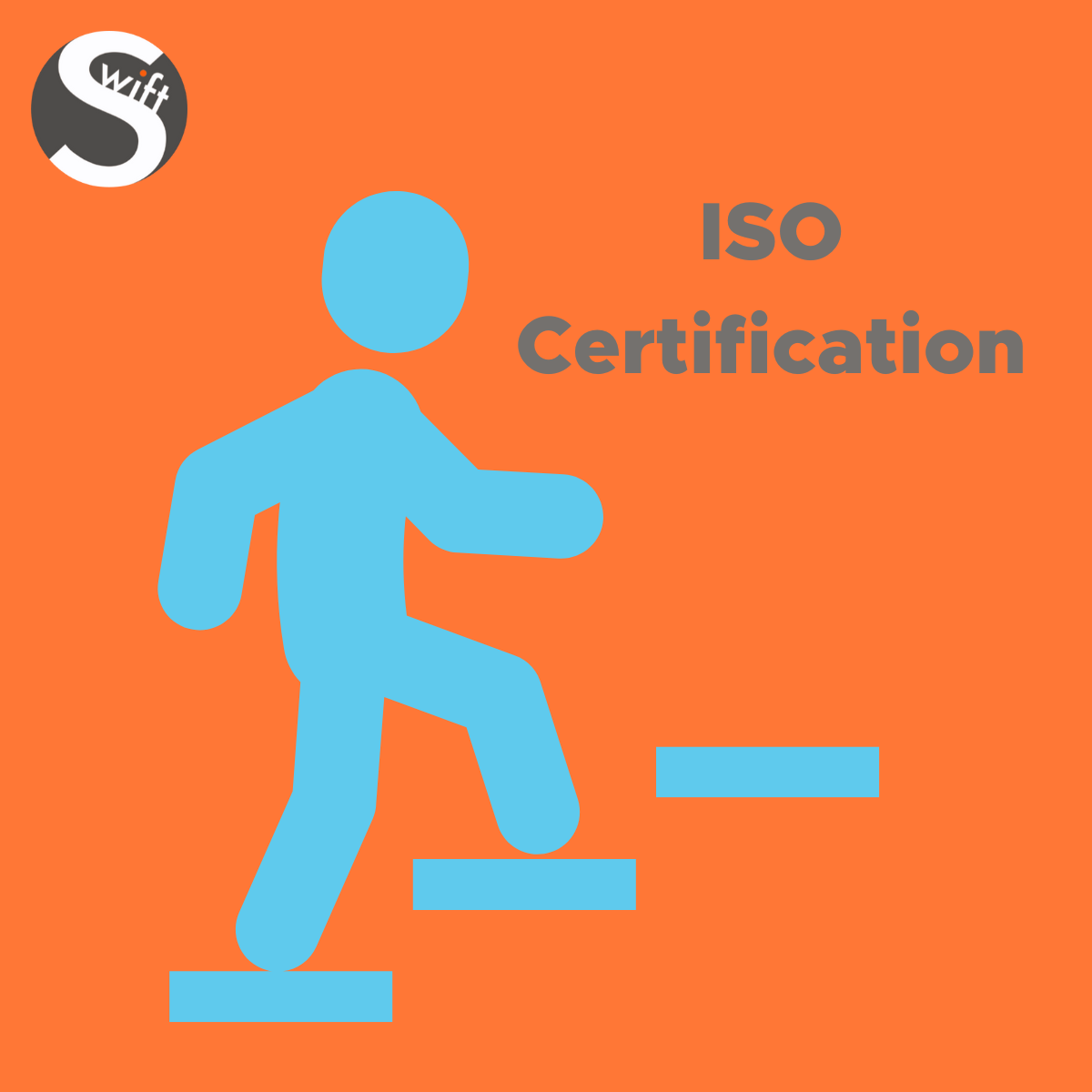In the ever-evolving world of business, ISO certification stands as a mark of quality, reliability, and excellence.
For many organisations in the UK, achieving ISO certification can significantly enhance their credibility, streamline operations, and open doors to new opportunities. However, the journey to obtaining ISO certification can seem complex and daunting. This blog post will guide you through the essential steps involved in the ISO certification process, helping you understand what to expect and how to prepare effectively.

1. Understanding ISO Certification
ISO (International Organisation for Standardisation) certification is a formal recognition that an organisation meets specific international standards. These standards are designed to ensure that products and services are of consistent quality and adhere to best practices. ISO certifications cover various aspects, including quality management (ISO 9001), environmental management (ISO 14001), and information security (ISO 27001), among others.
2. Define Your ISO Certification Goals
Before embarking on the certification journey, it’s crucial to define your goals. Determine which ISO standard aligns best with your organisation’s needs and objectives. For example, if you aim to enhance customer satisfaction and improve internal processes, ISO 9001 might be the appropriate choice. If your focus is on environmental management, ISO 14001 could be more relevant.
3. Conduct a Gap Analysis
A gap analysis is a critical step in the certification process. This involves evaluating your current practices against the requirements of the ISO standard you wish to achieve. By identifying gaps and areas of improvement, you can develop a clear roadmap to bridge these gaps. It’s advisable to involve experienced consultants or internal experts to ensure a thorough analysis.
4. Develop an Implementation Plan
With the results of the gap analysis in hand, the next step is to develop a detailed implementation plan. This plan should outline the specific actions required to meet the ISO standard, assign responsibilities, set timelines, and allocate resources. Ensure that your plan includes employee training, process changes, and any necessary documentation updates.
5. Implement Changes and Train Staff
Effective implementation of ISO standards requires changes to existing processes and practices. This may involve revising procedures, introducing new workflows, and updating documentation. Employee training is also crucial, as staff members need to understand the new processes and their roles in maintaining compliance. Consider conducting workshops, seminars, or online training sessions to ensure everyone is adequately prepared.
6. Internal Audits and Reviews
Internal audits are an essential part of the ISO certification process. These audits help assess whether your organisation’s practices align with the ISO standard and identify areas for further improvement. Regular internal audits should be conducted before the external certification audit to ensure that any issues are addressed promptly. It’s beneficial to have an internal audit team or designate qualified personnel to carry out these audits.
7. Management Review
A management review is a critical component of the certification process. This review involves evaluating the effectiveness of your implemented processes, assessing compliance with the ISO standard, and making necessary adjustments. It is an opportunity for senior management to assess the overall performance of the quality management system (or other applicable standards) and ensure continuous improvement.
8. Engage a Certification Body
Once you have completed the implementation phase and conducted internal audits, the next step is to engage a certification body. A certification body is an independent organisation accredited to assess compliance with ISO standards. Choose a reputable certification body with experience in your industry and a strong track record. The certification body will schedule an audit to evaluate your organisation’s adherence to the ISO standard.
9. External Certification Audit
The external certification audit is conducted by the chosen certification body. This audit involves a thorough examination of your organisation’s processes, documentation, and practices to ensure compliance with the ISO standard. The audit typically consists of two stages: a preliminary review and a detailed assessment. During the preliminary review, the auditor will assess your documentation and readiness for the detailed audit. The detailed audit involves a comprehensive examination of your operations.
10. Address Non-Conformities
If the external audit identifies any non-conformities, you will be required to address these issues before certification can be granted. Non-conformities are deviations from the ISO standard and must be corrected to achieve certification. Work closely with the certification body to develop an action plan to resolve these issues. After implementing corrective actions, the certification body will conduct a follow-up audit to verify that the non-conformities have been addressed.
11. Obtain ISO Certification
Upon successful completion of the audit and resolution of any non-conformities, you will receive your ISO certification. This certificate is a testament to your organisation’s commitment to quality, environmental responsibility, or other relevant standards. The certification body will issue a certificate valid for a specified period, typically three years.
12. Maintain and Improve
ISO certification is not a one-time achievement but an ongoing commitment to excellence. After obtaining certification, it’s crucial to maintain compliance and continuously improve your processes. Regular internal audits, management reviews, and employee training should be part of your ongoing efforts. Certification bodies may also conduct surveillance audits to ensure that your organisation continues to meet ISO standards.
How to Get ISO Certification?
ISO Certification costs vary depending on your business, we offer competitive pricing and a unique client led approach to our auditing services. Contact us today for a FREE, no obligation quote – Call us on 0161 470 5352 or fill out a form here and a member of our team will be in touch
Conclusion
Achieving ISO certification can be a transformative experience for organisations in the UK. By following these steps and committing to quality and continuous improvement, you can enhance your organisation’s credibility, streamline operations, and gain a competitive edge. While the certification process may seem complex, a structured approach and dedication to meeting ISO standards can lead to significant long-term benefits. If you’re considering ISO certification for your organisation, take the time to understand the process, plan carefully, and engage with experienced professionals to guide you through the journey.
By navigating the ISO certification process with careful planning and dedication, your organisation can demonstrate its commitment to excellence and position itself for success in the competitive marketplace.




